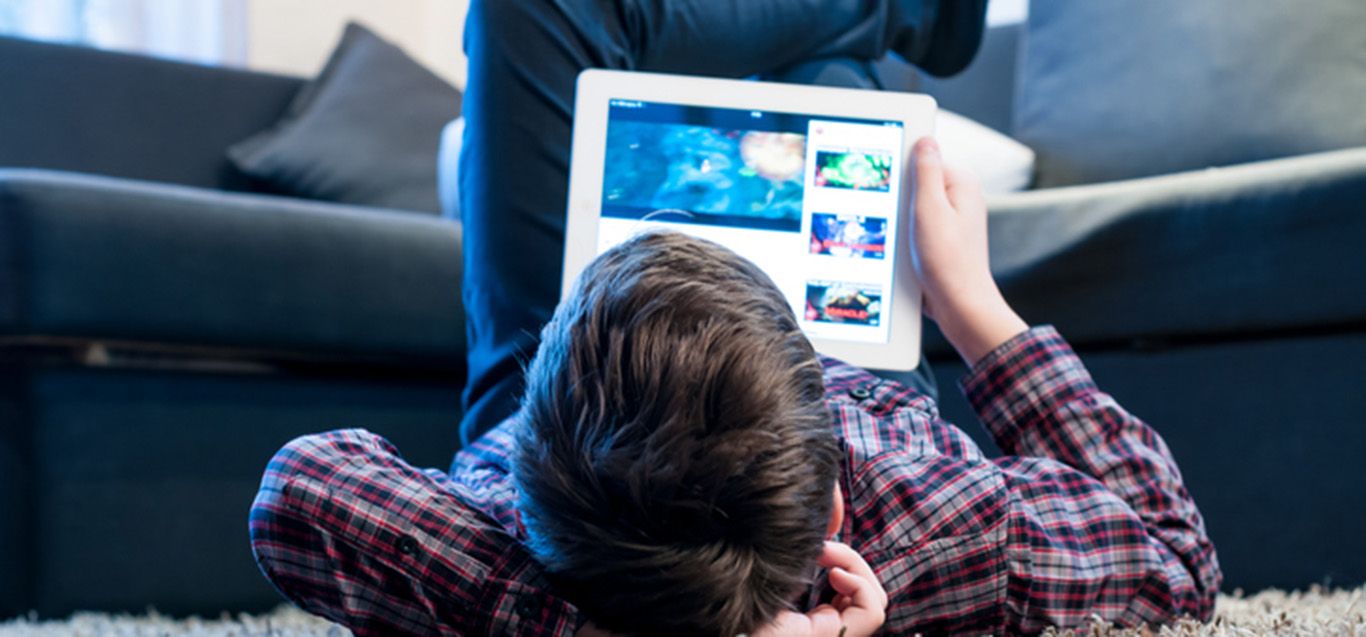
Keeping up with your child online
Posted: December 20, 2016This holiday season, many kids and teens will receive their first digital device. This will no doubt be a joyful moment for our little loved ones, but as the saying goes, “with great power, comes great responsibility.” While these platforms can foster learning, encourage play and bring us closer together, they also present the potential for trouble when children are able to connect with the unfiltered, wide world of the web. Parents need to pay attention to and communicate with children about all applications they are using on cell phones, tablets, computers and any other device with internet access.
This time of year is a good one to sit down and talk with your child about cyberbullying.
Approximately 7 percent of students in 6-12th grade experienced cyberbullying last year, according to the latest statistics available at stopbullying.gov/cyberbullying. For high school students, 15 percent reported electronic bullying in the past year. Research on cyberbullying is growing. However, because kids’ technology use changes rapidly, it is difficult to design surveys that accurately capture trends.
Thomas Hobson, of Le Bonheur Children’s Hospital, says this is why asking questions, communicating and being aware of what social media your child is on is extremely important.
What is cyberbullying?
Cyberbullying is bullying that takes place using electronic technology. Electronic technology includes devices and equipment such as cell phones, computers and tablets as well as communication tools including social media sites, text messages, chat and websites.
How do I know if my child is being cyberbullied?
Some warning signs of cyberbullying could include:
- Seems afraid of going to school, walking to and from school, or taking part in organized activities with peers
- Sudden loss of interest in school or poor performance
- Appears anxious and suffers from low self-esteem
If your child shows any of these signs, it doesn't necessarily mean that he or she is being cyberbullied, but it is worth exploring.
How can I monitor my child’s technology?
Some things to do to help monitor your child’s online usage:
- Know what social media sites your child is on
- Snapchat – a mobile app that allows users to send photo/videos, both of which will self-destruct after a few seconds of a person viewing them
- Facebook – a social networking site that allows users to connect and share photos, videos, articles, links, etc. with friends and family
- Instagram – an online mobile photo/video-sharing social networking service that allows users to share either publicly or privately, as well as through a variety of other social networking platforms such as Facebook, Twitter, Tumblr and Flickr
- Twitter – a site for friends and family to communicate and stay connected through the exchange of quick, frequent messages up to 140 characters of text
- Tumblr/Flickr – popular photo/video/quote/link/etc. sharing service that where people share and explore each other’s posts
- Musical.ly – a platform for creating and sharing short videos
- Whisper – an app which says that it allows users to send messages anonymously, and to receive replies
- Ask.fm – an anonymous question and answer platform website that allows anyone to post comments and questions to a person’s profile
- Kik Messenger – an instant messenger software application
- Voxer – combines the best of voice and text messages with walkie-talkies for a powerful, modern personal and group messaging tool
- WhatsApp – a cross-platform mobile messaging app which allows you to exchange messages without having to pay for SMS
- Audio Manager/Calculator% - Apps that have nothing to do with controlling your child’s phone audio or calculator. These apps look like a normal audio controller or calculator, but when you push a button within the app they can hide whatever they are looking at on their phone.
- Have the passwords to each site and frequently check to see if cyberbullying is occurring
- Take the time to look at and ask specific questions about online usage
- Set clear ground rules (when and how much screen time is allowed; where children can use their decide; who they have to tell if they want to download a new app or create an online account; etc.) and be aware of your child’s interactions online
- Add your child to your iCloud account so whenever a new app is downloaded, it will automatically be downloaded to your phone as well
What should I do if I think my child is being bullied online?
- Find out where the cyberbullying is happening – at home, school, or both
- Block/unfriend the cyberbully
- Discuss and communicate the harms of cyberbullying
The main thing to consider is to keep the lines of communication open with your child. Simply talking to them usually will produce good information for you to work from.
For more information and online resources, visit www.stopbullying.gov/cyberbullying.



